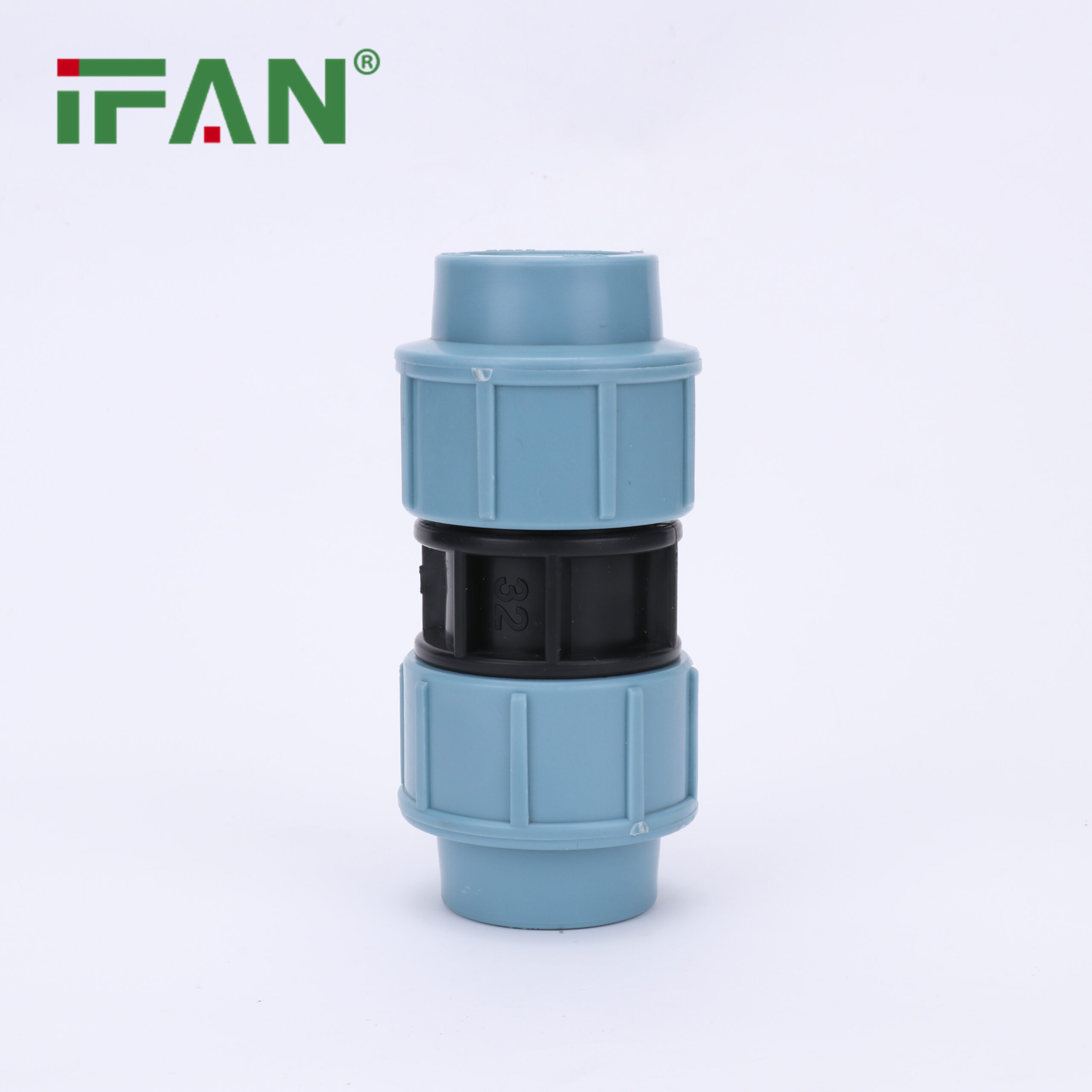PP Compression Fittings
Name: PP Compression Fittings
Size: 20-110mm
Material: HDPE
Brand: IFAN
Color: Blue
Application: Plumbing System
Category : Click Download
Whatsapp : +86 19884503412
Wechat : 19884503412
Description
I. Introduction to PP Compression Fittings
PP compression fittings, also known as polypropylene compression fittings, are essential components in plumbing and fluid transportation systems. These fittings are designed to connect and secure polypropylene (PP) pipes or tubes, ensuring leak-free and reliable connections. In this article, we will explore the key features, applications, manufacturing processes, and quality requirements of PP compression fittings.IFAN factory 30+ years manufacture experience support color/size customization support free sample.Welcome to consult for catalog and free samples.This is our Facebook Website: www.facebook.com
II. Features
HDPE compression fittings offer several notable features that make them a popular choice in various industries and applications:
Material: PP compression fittings are made from high-quality polypropylene material, known for its excellent chemical resistance, durability, and strength.
Leak Resistance: These fittings provide a reliable and leak-resistant connection, preventing fluid or gas leakage in plumbing systems.
Corrosion Resistance: PP compression fittings are highly resistant to corrosion, making them suitable for use with a wide range of fluids, including chemicals.
Ease of Installation: They are designed for easy and quick installation, eliminating the need for complex tools or soldering, which can save time and labor costs.
Versatility: PP compression fittings are compatible with various pipe materials, including PP, PVC, and PE, enhancing their versatility in different applications.
Temperature Tolerance: They can withstand a wide temperature range, making them suitable for both hot and cold water systems.
Pressure Rating: PP compression fittings typically have a high-pressure rating, ensuring their performance in demanding environments.
III. Applications
HDPE pipe fittings find extensive use across multiple industries and applications due to their versatile characteristics. Some common applications include:
Water Distribution: These fittings are widely used in potable water distribution systems, ensuring safe and secure connections between pipes.
Irrigation: PP compression fittings are essential components in agricultural irrigation systems, facilitating the efficient and reliable transport of water to crops.
Chemical Transfer: Their corrosion resistance makes them suitable for chemical transfer pipelines in industries such as agriculture, mining, and chemical processing.
Swimming Pools: PP compression fittings are used in swimming pool plumbing systems to connect pipes for water circulation and filtration.
Industrial Processes: They play a crucial role in various industrial processes, including the transportation of fluids, gases, and compressed air.
IV. Manufacturing Process
The production of HDPE fittings involves several key steps:
Material Selection: High-quality polypropylene resin is chosen for its durability and chemical resistance.
Injection Molding: The selected resin is heated and injected into molds designed to create various fitting shapes and sizes.
Cooling and Solidification: The molten polypropylene is cooled and solidified in the mold, taking on the desired shape.
Trimming and Finishing: Excess material is trimmed, and the fittings are inspected for defects.
Quality Control: Each fitting undergoes rigorous quality control checks to ensure it meets industry standards.
Packaging: The finished PP compression fittings are packaged and prepared for distribution to customers.
V. Quality Requirements
To meet industry standards and ensure reliable performance, PP compression fittings must adhere to specific quality requirements:
Dimensional Accuracy: Fittings must have precise dimensions to ensure compatibility and secure connections with pipes.
Material Quality: High-quality polypropylene with the necessary chemical and mechanical properties should be used.
Leak Resistance: Fittings must pass leakage tests to ensure they provide a reliable seal under pressure.
Pressure Rating: Fittings should be labeled with their maximum pressure rating to guide their appropriate use.
Certifications: Compliance with relevant industry standards and certifications is essential to guarantee product quality.
Durability: Fittings should demonstrate long-term durability and resistance to environmental factors.
In conclusion, HDPE compression fittings are indispensable components in plumbing and fluid transportation systems, offering versatility, ease of installation, and reliable performance. Understanding their features, applications, manufacturing process, and quality requirements is crucial for ensuring the success of various projects and industries that rely on these fittings.
相关产品
- HDPE Pipe & Fittings
HDPE Pipe Fittings Tee
- HDPE Pipe & Fittings
HDPE Fittings Female Tee
- HDPE Pipe & Fittings
HDPE Socket Fittings
- HDPE Pipe & Fittings
HDPE Fittings Socket
HAVE ANY QUERIES? SEND TO CONTACTOANTSMACHINE.COM
ONTACT US













